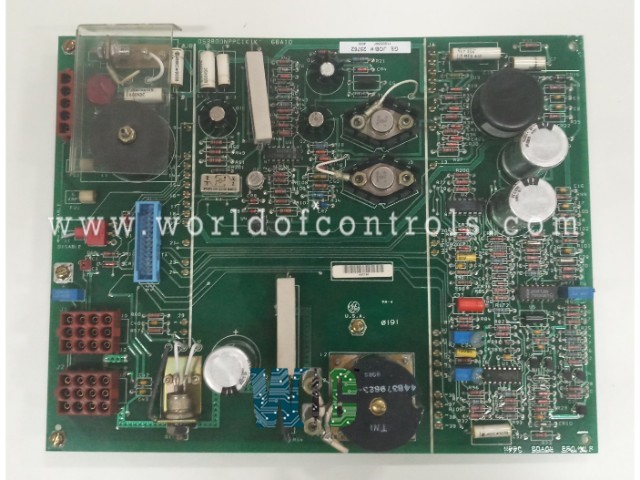
World Of Controls understands the criticality of your requirement and works towards reducing the lead time as much as possible.
DS3800NPPC1J - Power Supply Board on Module PSCC is available in stock which ships the same day.
DS3800NPPC1J - Power Supply Board on Module PSCC comes in UNUSED as well as REBUILT condition.
To avail our best deals for DS3800NPPC1J - Power Supply Board on Module PSCC, contact us and we will get back to you within 24 hours.
SPECIFICATIONS:
Part Number: DS3800NPPC1J
Manufacturer: General Electric
Series: Mark IV
Product Type: Power Supply Board on Module PSCC
Wide power-supply range: ±90 V (180 V)
High-output load drive: ±45 mA
Board Size: 60.96 x 41.28 mm
Operating Temperature: 0 - 50° C
Weight: 0.15 Kg
Country of Origin: USA
Availability: In Stock
FUNCTIONAL DESCRIPTION:
DS3800NPPC1J is a Power Supply Board on Module PSCC manufactured and designed by General Electric as part of the Mark IV Series used in GE Speedtronic Gas turbine control systems. The Power Supply Board on the Module (PSCC) for a turbine control system is a critical component that ensures the reliable and stable operation of the turbine by providing the necessary power to the control electronics and sensors. In a gas or steam turbine, the PSCC would typically be integrated into the control cabinet. It would convert the high-voltage AC power from the generator or grid into low-voltage DC power required by the turbine control electronics. The PSCC would power the PLC (Programmable Logic Controller), HMI (Human-Machine Interface), and various I/O modules that interface with sensors and actuators. By providing stable and reliable power, the PSCC ensures that the control system can continuously monitor the turbine's performance, execute control commands to adjust operating parameters and respond to any faults or anomalies in real-time. Here's a detailed overview of its key features and functions:
KEY FEATURES:
Power Conversion and Regulation:
Protection Mechanisms:
Power Distribution:
Monitoring and Diagnostics:
Interfaces and Connectivity
FUNCTIONS IN A TURBINE CONTROL SYSTEM:
WOC has the largest stock of OEM replacement parts for GE Speedtronic Gas Turbine Control Systems. We can also repair your faulty boards and supply unused and rebuilt boards backed up with a warranty. Our team of experts is available round the clock to support your OEM needs. Our team of experts at WOC is happy to assist you with any of your automation requirements. For pricing and availability on parts and repairs, kindly contact our team by phone or email.
Does the PSCC support remote monitoring?
Many modern PSCCs support remote monitoring via communication interfaces such as CAN bus or Modbus. This allows for real-time monitoring and diagnostics through a SCADA system or similar platform.
What is the role of redundancy in a PSCC?
Redundancy ensures continuous operation even if one PSCC module fails. Redundant power supply modules are often used in critical applications to enhance reliability and prevent system downtime.
What are the common indicators of a PSCC?
Common indicators include LEDs or digital displays showing power status, fault conditions, and operational status. These indicators help with monitoring and diagnostics.